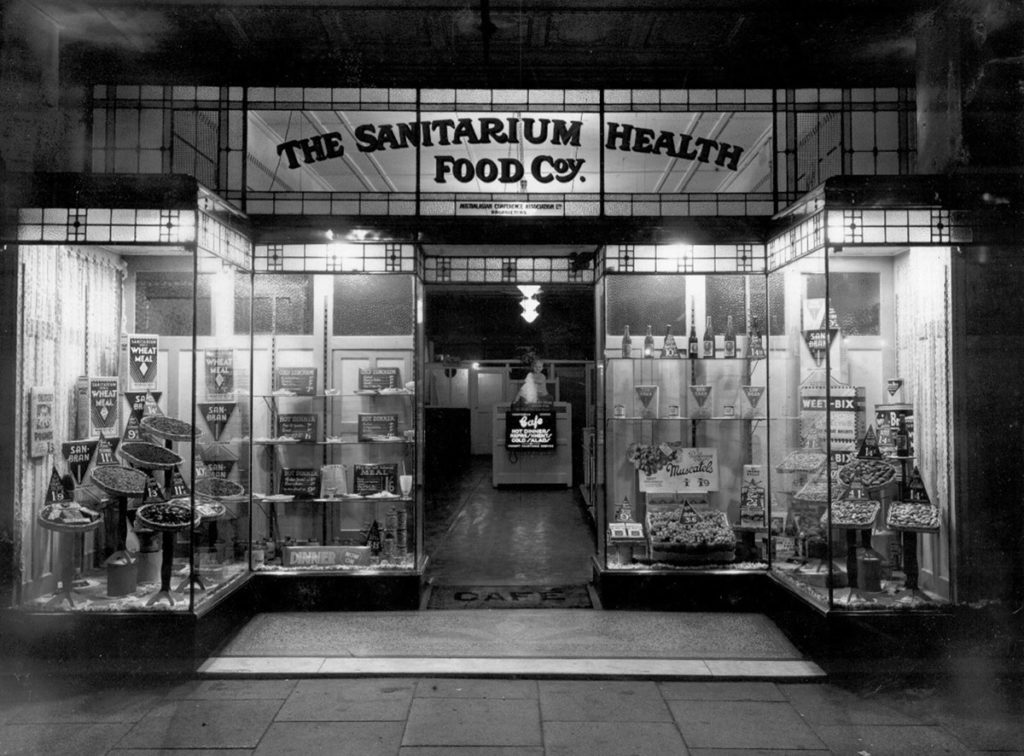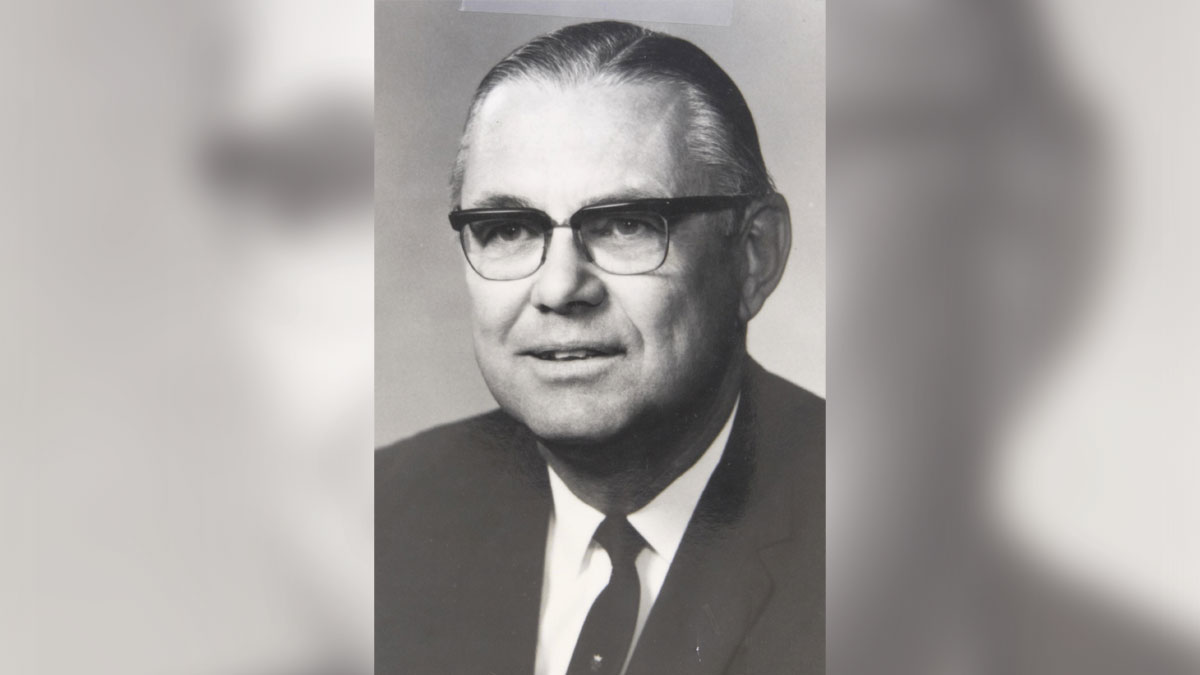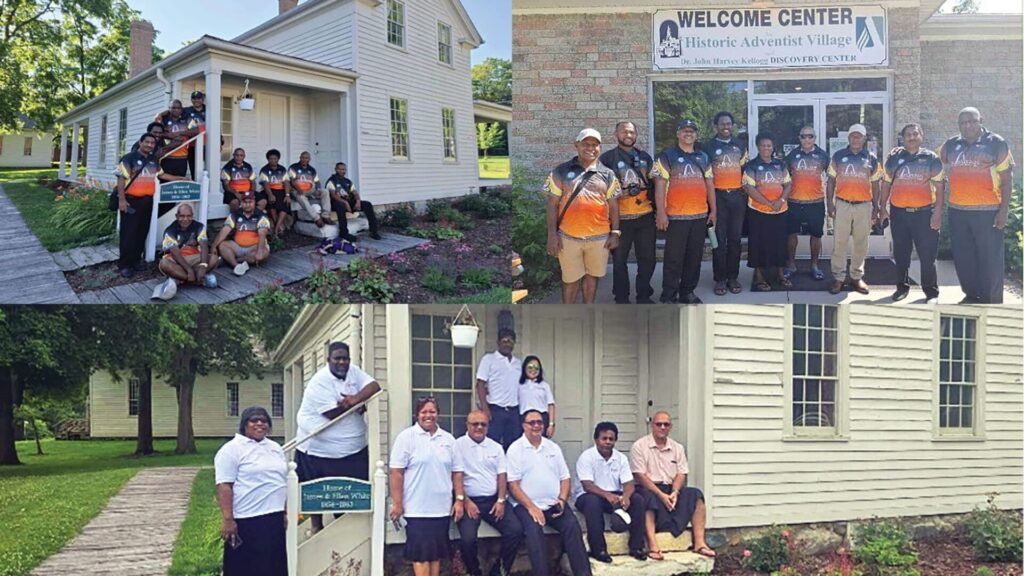Mabel de Jersey and Will Howse travelled from Hobart in Tasmania to become students at the Australasian Missionary College (now Avondale University College). She graduated from the teaching course in 1911 and he from the missionary course in 1912. They married on January 8, 1913 and then sailed immediately for mission service in Tahiti, French Polynesia. Their son was born the next year, 1914, and named after Eric Hare, the well-known missionary to Burma (now Myanmar) and a close friend and former college room-mate of Will Howse. In time, three siblings were born: brother Ron also in Tahiti; then sister Moira while the family was in mission service in the Cook Islands; and finally, in 1925, the family circle was made complete with the arrival of Eileen, while the family was back in Australia and living in Warburton, near Melbourne.
From the age of seven until 19, Eric lived at Warburton where his father was employed as a printer for Signs Publishing Company. When his formal education ended in 1928, his part-time work splitting wood and washing dishes for Warburton Sanitarium became full-time employment in the Signs Publishing Company bindery, gluing newly printed cereal packets for the Sanitarium Health Food Company (SHF). The 14-year-old junior employee could not have imagined he was to become the leader of the world food work of the Adventist Church, based in Washington DC.
The young Eric, who had not thought beyond his present employment, was soon asked if he would like to study accountancy, as there was a vacancy in the Signs Publishing Company office. He was willing and soon found the office work enjoyable and was promptly sent to Melbourne to train on the Comptometer. It was good that he got 100 per cent on the final exam, as he was the only one back in the Warburton office who knew how to use the machine.
Eric’s Warburton work was varied in that he regularly helped other departments, preparing mailing labels for example, and he quickly learned how the publishing program of the Church worked. Studying accountancy in his spare time, he was soon moved into the accounts department and was responsible for wage analysis and costing. He enjoyed his work in Warburton and was surprised when, after five years, he was asked to be the assistant accountant at the Australasian Union office (precursor of the South Pacific Division) in Wahroonga on the outskirts of Sydney.
Not only was Eric busy with his accountancy work in Wahroonga and his evening accountancy studies, he was also responsible for meeting arriving missionaries in the only car the Union office had in those days, a Silver Anniversary Buick. He also took departing missionaries to meet their ships as they went out on mission service. This meant his Sundays were fully taken up with intense study as he had accountancy examinations to prepare for every six months.
Very happy in his work, Eric was surprised when his boss, T W Hammond, noticed that Eric had never attended Avondale (which Eric had no intention of doing as he was close to qualifying as an accountant). But in those days you did what the boss said and so Eric went off to attend Avondale. Being self-supporting, he had to work his way through his study program, which meant he took only a partial academic load while there.
After Avondale—back working fulltime for the Church as an accountant again—Eric met May Bradley who was also an accountant and working at the SHF Cafe in Sydney. She considered him a handsome young man who liked to walk her to work, and in time he asked her to marry him. This they did in 1938. She used to say ever after, “From here on this was the best part of all.”
In time Eric and May had two sons: Murray, who studied medicine and became a physician, and Kevin, who trained for the Adventist ministry, serving as a pastor in several countries before gaining his doctorate, and becoming a ministerial training lecturer at Newbold College (UK) and also Avondale.
As it did for pretty much everyone in those days, World War II interrupted their family life and Eric, surprisingly, volunteered for military service with the Royal Australian Air Force (1942–1946). After training, Eric spent most of the war years in Darwin, Northern Territory, as well as in Papua New Guinea, serving in the air force as a medic, leaving May and their infant son, Murray, back in Sydney for the duration.
After the war, their second son, Kevin, was born and while Eric returned to denominational service as the accountant for the Australasian Union, the family was soon called to mission service where Eric was the secretary-treasurer (1949-56) of the Central Pacific Union Mission, based in Fiji. Eric thoroughly enjoyed their time there, but May not so much, especially when a hurricane lifted the roof off their house!
On return from mission service Eric became the accountant for the Lewisham SHF factory in Sydney, a role he found interesting as he was much involved there with the introduction of a new accounting system. But he was also quite unwell with amoebic dysentery for which there was then no known cure. Desperate for help, he took leave from his work and travelled to the United States seeking a solution, which his good friend in Vancouver, Canada, Dr Athol Piper, researched and the problem was ultimately fully resolved. While in the United States he spent some time in several IBM offices investigating for the SHF the new computer-based accounting and costing system IBM had developed. Once he was well on the way to completing his six months of treatment and recovery from his health problem, Eric for a time managed a dry cleaning business in Vancouver in order to support his family back in Australia. Once fully recovered, Eric returned to Australia and his old job at Lewisham.

From 1960 Eric managed the Carmel SHF factory and Perth wholesale operations in Western Australia. From 1964 through 1966, he managed the Lewisham factory in Sydney and was then very surprised to learn that he had been elected treasurer of the Australasian Division, a position he held for two years, 1967-68.
Then, while on the way from Los Angeles to Washington to attend the General Conference session, he found himself on the same flight as Elder Pearson, the president of the General Conference. During that flight Pearson told Eric that the world Church needed to add a new department to oversee all the health food operations of the Church worldwide and wondered if Eric would be willing to establish and then lead it.
Thus Eric left his position as Division treasurer, with Lance Butler succeeding him, and set about selling up everything for the move to Washington DC.
Eric headed up the health food work of the world Church at the General Conference for 11 years. Many of the health food factories around the world were not doing well, compared with the SHF operation in Australasia and Eric, having previously managed health food factory operations there, combined with his financial expertise, was the right man at the right time to lead the world health food industry program. Unfortunately, Eric’s new role was a demanding one which kept him away from May and home for six months of the year. With both sons having left home and married, May would have been lonely during those years, though her position at the General Conference using her accounting skills was a demanding one and kept her very busy as secretary to W L Pascoe; so much so that when she eventually retired the Church had to hire several people to handle the workload she had coped with on her own for many years!
Eric and May endured sad times as well. It must have been grim for Eric and May to lose both sons in their prime of life, with both dying of brain tumours when only in their forties.
Eric Howse died on December 12, 2004 after 52 years of denominational service, 45 of them with the health food work. May Howse died on September 24, 2010, at the age of 99.
Dr Lester Devine is director emeritus of the Ellen G White/Adventist Research Centre at Avondale University College.






